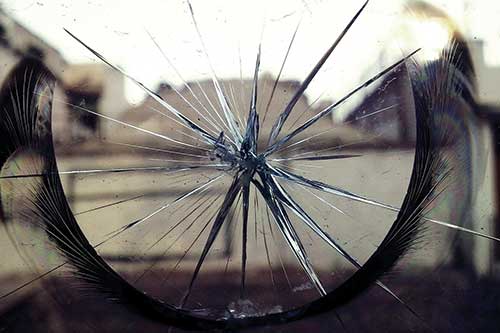Cracked windscreens can pose a significant threat to the safety of drivers and passengers. A common yet dangerous occurrence, they’re often underestimated by vehicle owners.
This article aims to shed light on the various safety implications of a cracked windscreen in the context of the Australian market, covering everything from recognising windscreen damage to understanding the legal and insurance implications in Australia.
The Importance of a Windscreen in a Vehicle
The windscreen is a critical component of any vehicle.
Apart from shielding the vehicle’s occupants from environmental elements, it plays a significant role in maintaining the overall structure of the vehicle.
Role of the Windscreen in Vehicle Safety
The windscreen provides a clear and undistorted view of the road and surroundings, playing a pivotal role in driver safety.
In addition, it serves as a backstop for the passenger-side airbag in the event of an accident, ensuring its proper deployment.
Contribution to Structural Integrity
The windscreen contributes to a vehicle’s structural integrity by supporting the roof in case of rollovers or severe crashes. A damaged windscreen can weaken this support, increasing the risk of roof collapse.
Impact on Visibility
Clear visibility is vital when operating a vehicle. A windscreen with cracks or chips can distort the driver’s view, contributing to potential road accidents.
Dirt and moisture can seep into the cracks, further decreasing visibility.
Recognising Windscreen Damage
Understanding the different types of windscreen damage and knowing how to identify them is the first step towards ensuring your vehicle’s safety.
Types of Windscreen Cracks
Windscreen cracks come in various forms, such as bullseye, half-moon, star breaks, and linear cracks.
Each type has unique characteristics, with severity varying depending on the impact source, size, and location of the damage.
Identifying Minor vs Major Damage
Minor damages like chips or small cracks might not pose an immediate danger, but they can rapidly escalate into larger cracks.
Major damage such as large cracks or shattered glass should be addressed immediately as they compromise the vehicle’s safety.
Key Areas of the Windscreen to Monitor
Pay special attention to the driver’s line of sight and the edges of the windscreen, as damage in these areas can severely impact visibility and the windscreen’s structural integrity.
Potential Hazards of a Cracked Windscreen
It’s important to understand the risks associated with driving with a cracked windscreen to realise the need for prompt repair or replacement.
Reduced Visibility
As mentioned, a cracked windscreen can hinder the driver’s view of the road, leading to potential accidents. This risk is heightened in adverse weather conditions.
Compromised Structural Integrity
A damaged windscreen weakens the vehicle’s structural support, increasing the likelihood of a roof collapse in the event of a rollover accident.
Increased Risk in Accidents
In the event of a collision, a cracked windscreen may shatter more easily, posing a risk of injury from flying glass. Furthermore, it may compromise the correct functioning of the passenger airbag.
Impaired Functionality of Advanced Driver-Assistance Systems (ADAS)
Modern vehicles often come equipped with ADAS, which rely on calibrated sensors embedded in the windscreen.
A cracked windscreen may interfere with these systems, hindering features like automatic braking, lane departure warnings, and adaptive cruise control.
Legal and Insurance Implications in Australia
A cracked windscreen isn’t just a safety hazard; it may also have legal and insurance implications in Australia.
Australian Roadworthy Standards
In Australia, driving with a severely cracked windscreen could violate roadworthy standards.
Each state or territory has its own roadworthy criteria, but as a general rule, any crack in the driver’s line of sight or a crack that impairs visibility could lead to a failed inspection.
Insurance Coverage and Cracked Windscreens
Many insurance companies offer coverage for windscreen repairs or replacements, but conditions apply.
It’s best to review your policy or consult with your insurance provider to understand your coverage.
Potential Legal Consequences
Driving with a severely damaged windscreen can lead to fines or penalties in many Australian states, underlining the importance of addressing windscreen damage promptly.
Repairing and Replacing a Cracked Windscreen
Once you’ve identified a cracked windscreen, the next step is to get it repaired or replaced. Your choice between the two depends on the extent and location of the damage.
When to Repair vs Replace
Generally, small chips or cracks can be repaired, but larger cracks or damage in the driver’s line of sight usually call for a replacement. A professional assessment will determine the best course of action.
Understanding the Repair Process
The chip repair process usually involves injecting a resin into the chip or crack, which is then cured and polished to restore strength and clarity.
It’s a relatively quick and cost-effective solution for minor damage.
The Windscreen Replacement Procedure
If the damage is severe, the entire windscreen will need to be replaced.
This process is more complex and time-consuming, involving the removal of the old windscreen, application of a primer and urethane adhesive, and installation of the new windscreen.
Choosing a Reliable Repair Service in Australia
Choosing a professional, reliable repair service is essential for quality work. Look for providers who follow Australian safety standards, offer guarantees, and have a solid reputation.
Maintaining Your Windscreen Post-Repair or Replacement
Once your windscreen has been repaired or replaced, maintaining it becomes crucial to avoid future cracks and ensure longevity.
Caring for Your Newly Repaired or Replaced Windscreen
For the first few days post-repair or replacement, avoid slamming car doors, remove the inside and outside retention tape, and avoid car washes to allow the adhesive to cure properly.
Preventative Measures to Avoid Future Cracks
Prevention is key. Avoid following vehicles closely, especially on gravel roads to prevent stone chip damage.
Regularly clean your windscreen and use a sunshade to prevent temperature-induced stress cracks.
Conclusion: Prioritising Safety with a Crack-Free Windscreen
In conclusion, the safety implications of a cracked windscreen are far-reaching, affecting not only the vehicle’s occupants but also other road users.
Recognising windscreen damage, understanding the risks, knowing the legal and insurance implications in Australia, and taking appropriate repair and maintenance steps are crucial aspects of safe vehicle ownership.
Remember, a crack-free windscreen isn’t just about clear vision; it’s about safe journeys.





